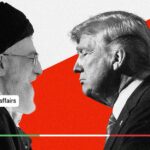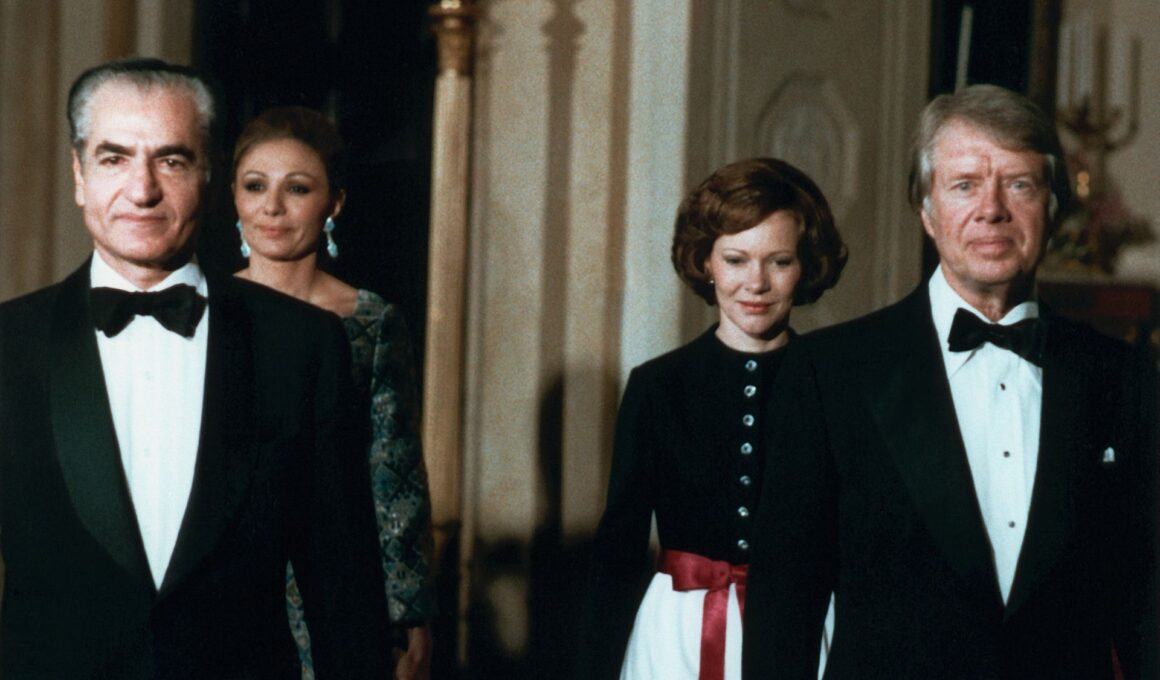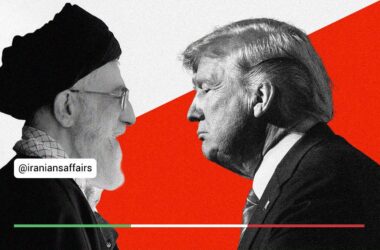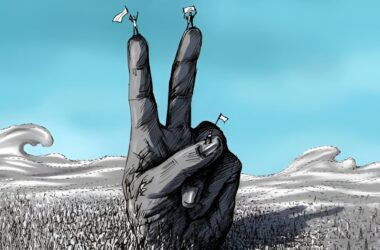Rise in Global Oil Prices and Inflation
Following the Arab countries’ invasion of Israel in October 1973 and Israel’s decisive response, which was seen as a humiliation to the Arab world, the Organization of Arab Petroleum Exporting Countries, led by King Faisal, imposed an oil embargo on countries supporting Israel. The oil embargo led to a significant increase in oil prices in the years after 1974. This price surge occurred while the United States grappled with record inflation due to increased federal government debt for military spending in the Vietnam War (1955-1975). The average price of oil between 1974 and 1978 was ten to fifteen U.S. dollars, more than five times the price in the 1971-1973 period.
Nixon Doctrine: Energy Security and Communist Control at the Soviet Borders
Richard Nixon, the then-President of the United States, addressed the rising oil prices by negotiating peace for Israel’s withdrawal from the Sinai Desert and the Golan Heights. In domestic policy, he unveiled the Energy Independence Project in November 1973 to achieve self-sufficiency in energy production. The Nixon Doctrine, after the British withdrawal from the Middle East, established two stable pillars in the Persian Gulf region: Saudi Arabia for energy supply and Iran for safeguarding America’s interests. Iran played a crucial role in deterring communist expansion from the Soviet Union’s southern borders and securing the energy transport chain.
Gerald Ford and the Republicans’ Failure
However, the Watergate scandal in 1973, followed by the resignation of the U.S. President – an exceptional event in the country’s history – led to political instability for the Republicans. Gerald Ford, Nixon’s Vice President, failed to gain sufficient political legitimacy during his three-year presidency, especially amidst the recession, rampant inflation, and increasing unemployment. Ford’s attempts to control inflation with Nixon’s contractionary policies faced opposition from Democratic Congress members. Simultaneously, changes in his energy policies drew criticism from both Republican and Democratic fronts.
Ultimately, Nixon’s pardon, contrary to the prevailing sentiments at the time in the U.S., and the economic crisis during Ford’s era left little chance for Republicans in the 1976 presidential elections. Jimmy Carter, a lesser-known candidate, emerged victorious by advocating support for vulnerable segments, creating a federal agency for consumer rights, reducing defense budgets, and adjusting taxes to benefit lower-income groups.
Carter and the Crisis in the Southern Neighbors amid the Soviet Union’s Unity in the Middle of the Cold War.
The sensationalist propaganda of Marxist and Islamist political fighters regarding human rights violations in Iran and Carter’s unfamiliarity with international politics at a time when Iran needed the most support created a rift in U.S. foreign policy in supporting the Shah of Iran. Margaret Thatcher, who was the Prime Minister early in Carter’s presidency, writes in her memoirs: “Not liking Jimmy Carter was impossible. He was a genuinely committed Christian and sincerely pure. He also had high intelligence in science and a scientific method. But his election was more a result of the Watergate affair than his ability to convince the American people or the accuracy of his analysis of world conditions.” In another place, regarding Carter’s understanding of the spread of communism, she writes: “He was overly influenced by the doctrine that exaggerated the danger of communism and considered America’s intervention in supporting right-wing dictators equally destructive.”
The revolution or the Saur Coup in 1978, led by the Democratic People’s Party of Afghanistan, which was supported by the Soviet Union, and the subsequent invasion of Soviet military forces into Afghanistan to support radical left-wing forces in 1979, for the reasons mentioned above, came as a complete surprise to Carter. Brzezinski, Carter’s National Security Advisor, with Polish origins, had an accurate estimate of Soviet aggressive tendencies at that time. With a covert campaign, he initiated the preparation of Mujahideen forces in Afghanistan to entangle the Soviet Union in what he called the “Afghan trap.” Brzezinski later told the French magazine L’Observateur that he wrote to Carter at that time, saying, “Now is the time to give the Soviet Union a Vietnam War.”
Carter also had no choice but to distance himself from Nixon’s doctrine of arming U.S. ally nations. However, even this doctrine was not properly applied, and between 1979 and 1983, more than a quarter of U.S. arms sales were only to Saudi Arabia.
But the Iranian Revolution was the tragic part of Carter’s era, where a Western ally country in the vicinity of the Soviet Union became a gift to communist and radical religious forces. Carter, who had regarded Iran just before the 1979 revolution as an island of stability in one of the most unstable regions of the world, put the U.S. government in political disarray to allow left-wing revolutionaries, supported by the Soviet Union, more freedom of action. In a series of armed uprisings, they inflicted the most damage in the shortest possible time and put an end to the constitutional monarchy era in Iran.
Carter and Iran: Double Standards Policy
Just two years before the Iranian Revolution in January 1977, the U.S. government’s intelligence and research agency published a confidential report in response to concerns within the government about escalating tensions in Iran-U.S. relations. This report indicated a lack of awareness within part of the U.S. security apparatus regarding the extensive movements of communist and left-Islamist forces in Iran. The report predicted relatively stable relations until the mid-1980s, assuming the successor to the Crown Prince would maintain power, and Iran, economically constrained, would continue on its developmental path. The prediction of stable relations for ten to fifteen years, continuing Mohammad Reza Shah Pahlavi’s rule, led to Carter’s administration overlooking the extensive activities of left-wing and radical religious forces in Iran. Later, U.S. State Department documents admitted they were only monitoring the actions of Soviet communist forces, lacking specific information about their domestic branches in Iran.
Carter’s role in resolving the Israel-Palestine conflict through the Camp David Accords in 1978, on one hand, and establishing diplomatic relations and reducing tension with China in the same year, on the other hand, diverted attention from the Iranian issue. Especially considering their interpretation that stability in Mohammad Reza Shah Pahlavi’s government and the security situation were more critical than Soviet movements. The visible disagreement between Cyrus Vance (Secretary of State) and Brzezinski (National Security Advisor) on the Iran issue was more a result of the lack of prioritization of the Iran problem in Carter’s mind and, of course, the political turmoil in the diplomatic apparatus.
Carter’s attempts to fulfill campaign promises, such as reducing unemployment and resolving the economic crisis, were unsuccessful. Due to sensitivities about human rights violations by the Shah’s government, Carter had little inclination to engage with the Iran issue. In reality, leftist and radical religious students managed to persuade the American public, with Soviet financial and strategic support, that they were either better alternatives for Iran’s future interaction with the West or, at the very least, that the U.S. should be put in an impractical situation.
The political turmoil at that time is described by Henry Precht, head of the Iran desk at the U.S. Department of State from 1978 to 1980: “There was no clear policy in the government. Human rights advocates exerted pressure, some acted against them, the Department of Defense pursued its own policy, and the CIA did its job. Each group leaked related policies to the media for public support. These events were a textbook example of how not to conduct diplomacy in the modern era.”
The Carter administration’s interactions in the final months before the 1979 revolution with the Freedom Movement of Iran group and “moderate mullahs” were not an active policy but a reactive move amid the political turmoil in the diplomatic apparatus. Plans for dialogue with revolutionaries and the formation of a revolutionary government, simultaneous with the Shah’s presence, were canceled by Brzezinski. In fact, Brzezinski had a more accurate understanding of the nature of opponents and their interest in Soviet objectives.
The repeated cancellation of meetings between U.S. State Department experts and Khomeini did not change their perspective. Even unknown individuals close to Khomeini became advisors to the U.S. State Department, attempting to present a civilized and democratic image of Khomeini. For example, Sharyar Rouhani, the son-in-law of Ebrahim Yazdi, justified Khomeini’s raw texts, which contained anti-feminist and anti-Semitic content, to the U.S. State Department official for Iranian affairs: “No, no, don’t doubt it at all; these are not the words of Ayatollah. They are entirely fabricated. He has never published such a book, and these books have been completely manipulated.”
Thinking about the Unthinkable
In a previously confidential letter from John Sullivan, the last U.S. ambassador to Iran, written two months before Mohammad Reza Pahlavi’s departure, a portrayal of Iran’s future begins with the onset of Ayatollah Khomeini’s rule. Titled “Thinking about the Unthinkable,” he defends the establishment of an anti-communist religious government willing to cooperate with the West, concluding, “A non-communist government with moderate political figures like Bazargan and Minachi could take responsibility and lay the groundwork for the formation of the Founding Parliament and the writing of the Constitution of the Islamic Republic of Iran.”
Continuing to reassure the letter’s recipients, Carter and the Secretary of State, he ensures that in a non-inflammatory atmosphere, the result of the governmental election will be non-communist and Western-oriented, steering clear of religious extremism. This government will likely have good relations with Israel and become an ally similar to Kuwait for the United States.
Ultimately, Mohammad Reza Shah Pahlavi’s illness, departure from the country, and ongoing political turmoil between the Ministry of Foreign Affairs and the National Security Advisor led to the collapse of Iran’s political structure. The final blow was the neutrality of the army, which resulted from the direct intervention of General Huyser, then-NATO deputy. According to declassified U.S. government documents, General Huyser played a crucial role in justifying the Imperial Army’s orders to prevent intervention or a coup in two critical periods: the Shah’s departure and Khomeini’s entry into Iran.
The Final Nail in Carter’s Presidency Coffin
However, the final nail in the coffin of Carter’s single-term presidency was hammered by the Islamic Republic, whether intentionally or unintentionally playing a fundamental role in its formation. The hostage crisis, though not correctly understood or appropriately addressed by Carter, also had its roots in the administration’s misguided analysis of the revolutionary forces of 1979. Despite the Soviet Union’s inability to quickly control the Iranian government after the 1979 revolution, its primary goal of preventing a powerful Western ally from being present along its southern borders was realized.
